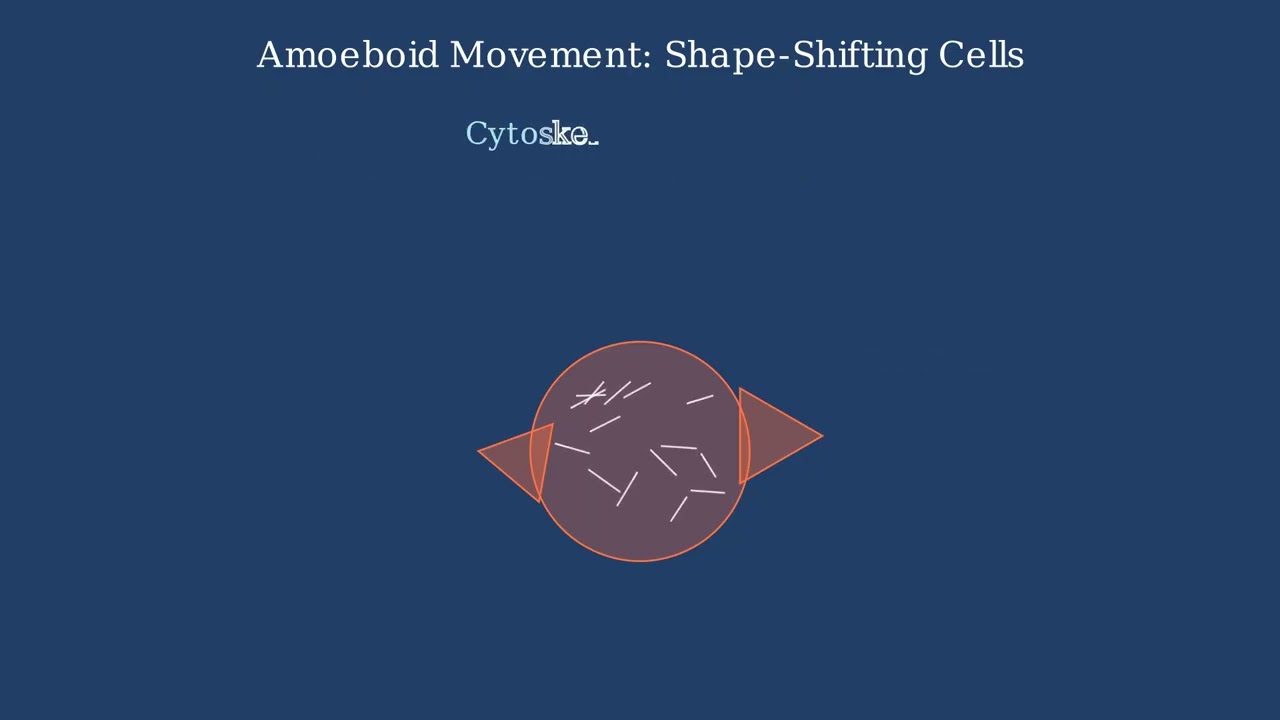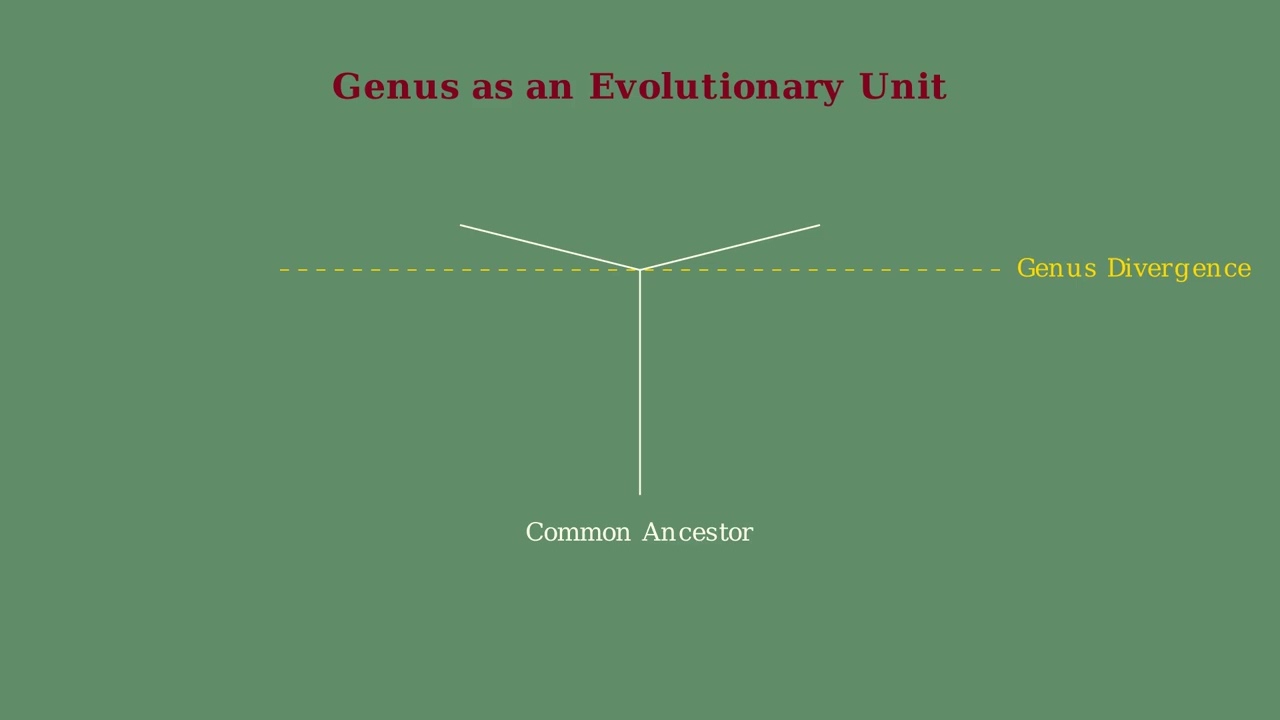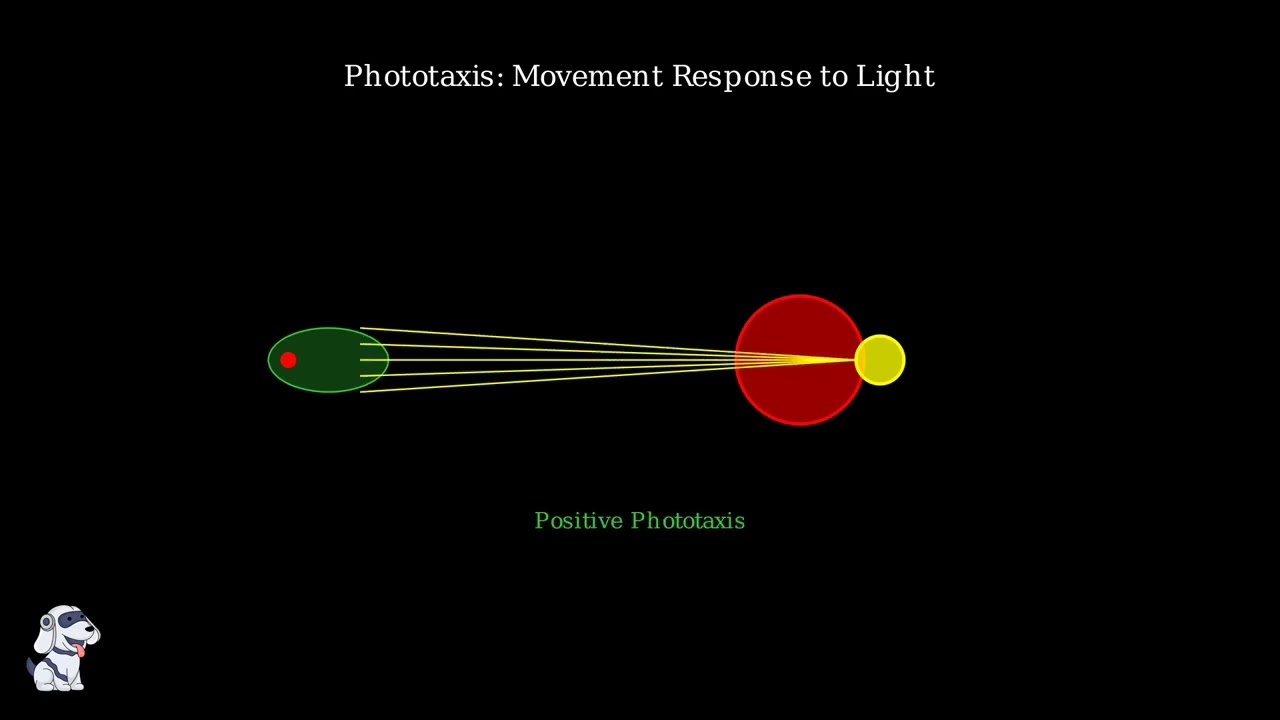Sourav Pan
Transcript
Hey everyone! Today, we’re diving into the fascinating world of protozoa and how scientists classify them.
Protozoa are like the animal-like members of the protist kingdom. They’re single-celled, eukaryotic microorganisms that are absolutely fascinating to study.
Think of them as tiny, complex creatures! Even though they’re just single cells, they have incredible diversity in their shapes, movements, and behaviors.
These tiny organisms show incredible diversity in how they move, feed, and survive. Some use pseudopodia like flowing extensions, others have hair-like cilia, and some propel themselves with whip-like flagella.
Understanding how to classify these diverse organisms has been a major challenge for scientists. That’s exactly what we’ll explore in this series – how classification has evolved from simple shape-based systems to sophisticated genetic approaches.
Protozoa are fascinating microscopic organisms that play crucial roles in our world. But what exactly are they? Let’s break this down step by step.
First, protozoa are eukaryotic microorganisms. The word eukaryotic is key here – it tells us something very important about their cellular structure.
Eukaryotic means their cells have a membrane-bound nucleus and other complex internal structures called organelles. This makes them very different from bacteria, which lack these organized compartments.
Now that we understand their cellular structure, let’s explore what makes protozoa unique among microorganisms.
Protozoa are called animal-like protists because they’re heterotrophic. This means they can’t make their own food like plants do. Instead, they must consume other organisms to get energy.
It’s important to understand what protozoa are not, to avoid common misconceptions.
Protozoa are not plants, which make their own food through photosynthesis. They’re not fungi, which absorb nutrients from their environment. And they’re definitely not bacteria, which lack the complex cellular organization of eukaryotes.
So remember: protozoa are eukaryotic, animal-like microorganisms that consume other organisms for energy. They’re a unique group of single-celled organisms with complex internal structures.
Why do scientists spend so much time classifying protozoa? There are several important reasons that make this work essential for science and medicine.
First, classification helps us understand how different protozoa are related to each other and how they evolved over time. Think of it like creating a family tree that shows which organisms are closely related.
Second, classification is like organizing a library. Imagine trying to find a specific book in a library where all the books are scattered randomly. But when books are organized by subject and author, finding what you need becomes much easier.
Third, classification helps us understand how protozoa function in different ecosystems. Some are predators that eat bacteria, others are parasites, and some help decompose organic matter.
Finally, and perhaps most importantly for human health, proper classification is crucial for understanding and treating diseases caused by parasitic protozoa. Different species require different treatments, so accurate identification can be a matter of life and death.
In summary, classifying protozoa is essential because it helps us understand evolutionary relationships, organize scientific knowledge, comprehend ecosystem functions, and develop effective medical treatments. It’s the foundation that makes all other protozoa research possible.
Historically, scientists classified protozoa based on what they could see under the microscope – their physical characteristics and how they moved around.
They looked at three main types of movement. First, some protozoa moved using flagella – long whip-like structures that propel them forward.
Second, others used cilia – tiny hair-like structures that beat in coordinated waves to move the organism.
And third, some moved using pseudopodia – extending parts of their cell body like arms to crawl along surfaces.
Here’s what these different types looked like under the microscope. Scientists could easily see these distinct movement patterns and used them to create classification groups.
The flagella would whip back and forth, the cilia would beat in waves, and the pseudopodia would extend and retract as the organism moved.
This approach was like judging a book by its cover. You could get a basic idea of what you were looking at, but you weren’t seeing the full story.
Just like a book’s cover doesn’t tell you about the plot, characters, or themes inside, a protozoan’s appearance doesn’t reveal its evolutionary history or genetic relationships.
The morphology-based approach was useful because it was easy to observe and gave scientists a starting point for understanding protozoa. However, it had significant limitations – it didn’t reveal evolutionary relationships, and organisms that looked similar weren’t necessarily close relatives.
The morphology-based classification system had a fundamental problem that scientists didn’t fully understand at first. Just because two protozoa looked similar didn’t mean they were closely related evolutionarily.
Let me show you what I mean with a simple example. Imagine we have two groups of protozoa that look very similar – they’re both round, they both move the same way, and they both seem to eat the same things.
Based on their appearance, the old classification system would put these organisms in the same family or group. They look so similar that it seems logical they must be closely related, right?
But here’s the problem: when scientists looked at their DNA and evolutionary history, they discovered something surprising. These similar-looking organisms were actually from completely different evolutionary branches!
This phenomenon is called convergent evolution. When organisms face similar environmental challenges, they often evolve similar solutions independently, even if they’re not closely related.
This created a huge problem for scientists trying to understand the true relationships between different protozoa. The old system was essentially grouping organisms by coincidence rather than by actual evolutionary history.
Scientists realized they needed a completely new approach – one that looked at the actual evolutionary relationships between organisms, not just their outward appearance. This is where modern phylogenetic classification comes in.
This fundamental flaw in morphology-based classification led to the development of modern molecular techniques that could reveal the true evolutionary story hidden in DNA.
Today, scientists have revolutionized how we classify protozoa. Instead of just looking at what they look like, we now study their evolutionary history – their phylogeny.
Phylogeny is like a family tree for all living things. It shows us which organisms are closely related and which ones evolved from common ancestors millions of years ago.
To build these family trees, scientists analyze genes and other molecular data. They look at DNA sequences, proteins, and cellular structures that can’t be seen with just a microscope.
This new approach has led to the concept of supergroups. Supergroups are like major branches on the tree of life, grouping together organisms that share a common evolutionary ancestor.
This phylogenetic approach gives us a much more accurate picture of how protozoa are related to each other and to all other life on Earth. It’s like having a detailed family history instead of just looking at family photos.
Now that we understand the problems with old classification methods, let’s explore the modern solution: supergroups. But what exactly are supergroups?
Supergroups are large, monophyletic groups of organisms. The key word here is monophyletic, which means all members of the group share a single common ancestor.
Let me show you what monophyletic means with a simple family tree. Imagine all organisms descending from a common ancestor, like branches on a tree.
A monophyletic group includes an ancestor and all of its descendants. For example, these organisms on the left would form one monophyletic group, sharing this common branch point.
The International Society of Protistologists, or ISOP, is the scientific organization that studies these microscopic organisms. In 2005, they established a new classification system.
ISOP recognizes six major supergroups of eukaryotes. These supergroups include all the organisms that used to be scattered across the old protozoa classification.
These supergroups represent a complete reorganization of how we classify microscopic life. Instead of grouping organisms by how they look or move, we now group them by their evolutionary relationships.
What makes this system so powerful is that each supergroup is monophyletic. This means every organism in a supergroup shares a common evolutionary history, making the classification scientifically meaningful and accurate.
Modern scientists organize all eukaryotic life, including former protozoans, into six major supergroups. These supergroups represent the most current understanding of evolutionary relationships.
Let me introduce you to each of the six supergroups. Each one contains a diverse array of organisms, including many that were traditionally called protozoans.
Archaeplastida includes plants and green algae. Excavata contains many flagellated protists. Chromalveolata encompasses diverse marine organisms.
Amoebozoa includes amoebas and slime molds. Rhizaria contains many shelled protists. And Opisthokonta includes animals and fungi.
The important thing to remember is that organisms we used to call protozoans are now scattered across different supergroups based on their evolutionary relationships, not just their appearance.
In the following sections, we’ll explore some of these supergroups in more detail and see specific examples of the organisms they contain.
The Excavata supergroup represents one of the major branches in the modern classification of protozoa. These organisms share two key defining features that set them apart from other supergroups.
First, Excavata members possess flagella – whip-like structures that help them move through their environment. Second, they have modified mitochondria, which are often reduced or altered compared to typical mitochondria found in other eukaryotes.
Many members of this supergroup are parasitic, causing significant diseases in humans and animals worldwide.
Let’s examine three important examples from Excavata. First is Giardia intestinalis, a parasitic protozoan that causes giardiasis, commonly known as traveler’s diarrhea.
Giardia has eight flagella that help it swim through intestinal fluids. It’s commonly found in contaminated water sources and causes symptoms like diarrhea, stomach cramps, and nausea.
Next, we have Trypanosoma species, which are kinetoplastids – a group characterized by a unique DNA structure called a kinetoplast. These parasites cause sleeping sickness in Africa and Chagas disease in South America.
Trypanosoma has a distinctive elongated shape with a single flagellum. The yellow structure represents the kinetoplast, which contains unique circular DNA. These parasites are transmitted by insect vectors like tsetse flies.
Finally, Leishmania species are also kinetoplastids that cause leishmaniasis. Unlike Trypanosoma, Leishmania exists in two forms: a flagellated form in the insect vector and a non-flagellated form inside human cells.
Leishmania demonstrates remarkable adaptability by changing its form depending on its host. In sandflies, it has flagella for movement, but inside human cells, it becomes round and loses its flagella. This causes various forms of leishmaniasis, from skin sores to serious organ damage.
To summarize, Excavata is a diverse supergroup united by flagella and modified mitochondria. These organisms include important human parasites that cause millions of infections worldwide, making them crucial targets for medical research and public health efforts.
Chromalveolata is one of the most diverse and medically important supergroups of protozoa. This group is characterized by a unique cellular feature that sets them apart from other protists.
The defining feature of Chromalveolata is the presence of membrane-bound vesicles called alveoli. These small sacs lie just beneath the cell membrane and help maintain cell shape and structure.
The most famous member of Chromalveolata is Plasmodium, the parasite that causes malaria. This deadly disease affects millions of people worldwide and demonstrates the medical importance of understanding protozoan classification.
Chromalveolata is incredibly diverse, containing not just parasites like Plasmodium, but also many free-living species. This diversity makes it one of the most studied supergroups in modern protist research.
Understanding Chromalveolata helps scientists develop better treatments for diseases like malaria and reveals important insights about the evolution of complex cellular structures in early eukaryotes.
The supergroup Amoebozoa represents one of the major groups in modern protozoa classification. These organisms are defined by their unique method of movement using pseudopodia.
Pseudopodia are temporary projections of cytoplasm that extend from the cell body. Think of them as cellular arms that can stretch out and pull the organism forward, like a blob changing shape as it moves.
Watch how pseudopodia work. The cell extends these projections in the direction it wants to move, then the rest of the cell flows into the extension. This creates a flowing, amoeba-like movement.
A medically important example from Amoebozoa is Entamoeba histolytica. This parasitic protozoan causes a serious intestinal infection called dysentery.
Dysentery is a severe form of diarrhea that can be life-threatening. Entamoeba histolytica invades the intestinal wall, causing bloody diarrhea, abdominal pain, and potentially serious complications if left untreated.
This example shows why understanding protozoa classification is so important. By grouping organisms like Entamoeba histolytica within Amoebozoa, scientists can better study their biology, develop treatments, and understand their evolutionary relationships.
Molecular markers have revolutionized how scientists classify protozoa. But what exactly are molecular markers, and why are they so important?
Molecular markers are specific DNA sequences and genes that scientists can extract and compare between different organisms. Think of them as genetic fingerprints that reveal evolutionary history.
Scientists extract DNA from different protozoa species and compare specific gene sequences. Each organism has unique genetic markers that tell the story of its evolutionary history.
When scientists compare these DNA sequences, they look for similarities and differences. Organisms with more similar sequences are more closely related evolutionarily.
Using molecular markers, scientists can build phylogenetic trees that show evolutionary relationships. This tree reveals that flagellates and ciliates share a more recent common ancestor than either does with amoebas.
Molecular markers are far more accurate than the old morphology-based classification. Physical appearance can be deceiving – organisms that look similar might not be closely related, while those that look different might share recent common ancestors.
The key takeaway is that molecular markers have revolutionized protozoa classification by revealing true evolutionary relationships. This molecular approach forms the foundation of modern taxonomy and helps scientists understand the real family tree of life.
Today, the term ‘protozoa’ has undergone a significant change in how scientists use it. Understanding this shift is crucial for anyone studying these fascinating microorganisms.
The term ‘protozoa’ is no longer considered a formal taxonomic rank in modern biology. Instead of being an official classification category, it has become an informal, descriptive term.
So what does this mean exactly? The term ‘protozoa’ is now used as a convenient way to describe animal-like protists – single-celled organisms that behave somewhat like tiny animals in how they move and feed.
Despite this change in formal classification, many scientists still find the term useful. Parasitologists, who study disease-causing organisms, continue to use ‘protozoa’ when discussing parasitic single-celled organisms that infect humans and animals.
Medical researchers also continue to use this term because it provides a clear, understandable way to group together organisms that cause similar types of infections, even though they may not be closely related evolutionarily.
This situation illustrates an important concept in science: sometimes practical, descriptive terms remain useful even when formal classifications change. The term ‘protozoa’ serves as a bridge between old and new ways of understanding these organisms.
While many protozoa are harmless, some species are dangerous pathogens that cause serious diseases in humans and animals worldwide. These microscopic organisms are responsible for some of the most devastating infectious diseases on our planet.
Malaria is one of the deadliest protozoan diseases, caused by Plasmodium species. This parasite is transmitted through mosquito bites and affects over 200 million people annually, causing more than 400,000 deaths each year, mostly in children under five.
Amoebic dysentery is caused by Entamoeba histolytica, a parasitic amoeba that invades the intestinal wall. This disease affects millions of people worldwide, particularly in areas with poor sanitation, causing severe diarrhea and potentially life-threatening complications.
Trichomoniasis is a sexually transmitted infection caused by Trichomonas vaginalis. This flagellated protozoan affects both men and women, though symptoms are more common in women. It’s one of the most common non-viral sexually transmitted infections worldwide.
Other important protozoan diseases include giardiasis caused by Giardia intestinalis, which causes severe diarrhea and is common in contaminated water sources. Sleeping sickness, caused by Trypanosoma species, affects thousands in Africa. Leishmaniasis, caused by Leishmania parasites, can cause skin lesions or affect internal organs.
Understanding why we study protozoa reveals their fundamental importance to biology and our understanding of life itself.
Protozoa are crucial for several key reasons. They help us understand early eukaryotic evolution, trace the origins of multicellular life, study ancient life forms, and track evolutionary changes over billions of years.
To appreciate their importance, we need to look at protozoa through the lens of deep time. These organisms have been on Earth for over three and a half billion years.
Three and a half billion years ago, the first protozoa appeared on Earth. These were among the earliest complex cells with nuclei and internal structures.
By one billion years ago, protozoa had evolved into incredibly diverse and complex single-celled organisms, setting the stage for even greater evolutionary leaps.
Today, we see the incredible diversity that has resulted from billions of years of protozoan evolution, with over fifty thousand described species.
Perhaps most importantly, protozoa show us how life transitioned from simple single cells to complex multicellular organisms. This evolutionary bridge is fundamental to understanding all life on Earth.
By studying protozoa, scientists gain invaluable insights into the fundamental processes that shaped all life on our planet. They are truly living windows into Earth’s evolutionary past.
Protozoa are not just microscopic curiosities – they are essential players in ecosystems around the world. These tiny organisms perform crucial roles that help maintain the balance of life on Earth.
Protozoa serve three primary ecological functions. As predators, they control bacterial populations by hunting and consuming smaller microorganisms. This helps prevent any single bacterial species from overwhelming an ecosystem.
As herbivores, many protozoa feed on algae and plant material. They help control algal blooms in aquatic environments and transfer nutrients up the food chain to larger organisms.
As decomposers, protozoa break down dead organic matter, recycling nutrients back into the ecosystem. This process is essential for maintaining soil fertility and water quality.
Protozoa have adapted to live in virtually every environment on Earth. In freshwater ecosystems like lakes and rivers, they form the base of many food webs, supporting fish and other aquatic life.
Marine environments host countless protozoan species that help process organic matter and serve as food for larger marine organisms, from tiny crustaceans to fish larvae.
In soil ecosystems, protozoa are crucial for nutrient cycling. They consume bacteria and release nitrogen and other nutrients that plants need to grow, making them essential for agriculture and forest health.
Some protozoa have evolved as parasites, living inside other organisms. While this can cause disease, these relationships also demonstrate the incredible adaptability of protozoan life.
Protozoa are like tiny ecosystem engineers. They control bacterial populations, preventing harmful overgrowth while ensuring beneficial bacteria can thrive.
They regulate algal populations in water bodies, preventing toxic blooms that could harm fish and other aquatic life.
Through their feeding and waste production, protozoa continuously cycle nutrients through ecosystems, making essential elements available to plants and other organisms.
Without protozoa, many ecosystems would collapse. These microscopic organisms may be invisible to the naked eye, but their environmental impact is enormous, supporting the web of life that sustains our planet.
Many parasitic protozoa are masters of survival, using a clever two-stage life cycle to thrive in challenging environments and spread to new hosts.
The first stage is called the trophozoite. This is the active, feeding form of the parasite. Trophozoites are like tiny eating machines – they move around, consume nutrients, and reproduce rapidly when conditions are favorable.
But when environmental conditions become harsh – like when nutrients run low, temperatures change, or the host’s immune system attacks – the protozoa transforms into its second stage: the cyst.
The cyst stage is completely different. The parasite forms a thick, protective wall around itself and enters a dormant state. It stops feeding, stops reproducing, and becomes incredibly resistant to harsh conditions.
Cysts are like biological time capsules. They can survive extreme temperatures, dehydration, chemical disinfectants, and even stomach acid. This makes them perfect for spreading between hosts through contaminated water, food, or surfaces.
When a cyst reaches a new, favorable environment – like inside a new host – it can excyst, transforming back into an active trophozoite ready to start the cycle all over again.
This two-stage life cycle is why parasitic protozoan infections can be so persistent and difficult to eliminate. Understanding these stages helps scientists develop better treatments and prevention strategies.
Despite decades of research and advances in our understanding of protozoa, developing effective treatments against protozoan diseases remains one of the biggest challenges in modern medicine.
The first major challenge is that many protozoa have complex life cycles with multiple stages. For example, they can exist as active trophozoites that feed and reproduce, or as dormant cysts that resist harsh conditions.
This creates a huge problem for drug development. A medication that effectively kills the active trophozoite stage may have no effect whatsoever on the protective cyst stage, allowing the infection to persist and return.
The second major challenge is drug resistance. When we treat protozoan infections, most of the parasites die, but a few resistant individuals often survive.
These resistant survivors then multiply and spread, creating new populations that are much harder to treat. This is why diseases like malaria have become increasingly difficult to control over time.
Beyond biological challenges, researchers face practical obstacles. Drug development takes over ten years and costs billions of dollars, while the biological complexity of protozoa makes finding effective targets extremely difficult.
These combined challenges explain why, despite urgent medical need, effective treatments for many protozoan diseases like sleeping sickness and leishmaniasis remain limited, highlighting the critical importance of continued research in this field.
The future of protozoa classification is rapidly evolving, driven by revolutionary advances in genomic technology and computational biology.
Genomic data is becoming the primary tool for understanding how protozoa are related to each other. Scientists can now sequence entire genomes quickly and affordably.
The future focuses on identifying monophyletic groups – organisms that share a common ancestor and include all descendants of that ancestor. This gives us a true picture of evolutionary relationships.
Advanced technologies like machine learning and artificial intelligence will help scientists analyze massive genomic datasets to discover new relationships and refine our understanding of protozoan evolution.
This genomic revolution means that scientists will be able to classify protozoa more accurately than ever before, leading to better understanding of diseases, evolution, and ecological relationships.
The future of protozoa classification is bright, with genomic data providing unprecedented accuracy in understanding these microscopic organisms and their place in the tree of life.
While scientific classification continues to evolve, many experts in the field maintain practical approaches to terminology. This creates an interesting divide between academic precision and real-world application.
On one side, academic researchers use modern phylogenetic classifications, organizing organisms into supergroups like Excavata, Chromalveolata, and Amoebozoa based on evolutionary relationships.
However, parasitologists and medical professionals often continue to use the traditional term ‘protozoa’ when referring to parasitic unicellular organisms that infect humans and animals.
Why do experts maintain this traditional terminology? The answer lies in practical communication and established medical protocols.
In medical practice, doctors still diagnose protozoal infections, medical textbooks have chapters on protozoan parasites, and pharmacies stock antiprotozoal medications. This terminology remains essential for clear communication.
This highlights an important principle in science: while academic classification evolves with new discoveries, practical terminology often persists when it serves a clear communicative purpose.
The key insight is that scientific accuracy and practical utility can coexist in different contexts. Experts adapt their language to their audience, using precise phylogenetic terms in research papers while maintaining familiar terminology in clinical practice.
This expert perspective shows that the evolution of scientific classification doesn’t necessarily eliminate older terminology when that terminology continues to serve important practical functions in specialized fields.
The World Health Organization has identified three critical protozoan diseases that require urgent attention and increased research funding. These diseases represent some of the most significant global health challenges of our time.
First is malaria, caused by Plasmodium parasites and transmitted through mosquito bites. In 2021 alone, there were 247 million cases worldwide, resulting in approximately 619,000 deaths, mostly among children in sub-Saharan Africa.
Second is trypanosomiasis, commonly known as sleeping sickness. This disease is caused by Trypanosoma parasites transmitted by tsetse flies. It remains endemic in 36 African countries and can be fatal if left untreated.
Third is leishmaniasis, caused by Leishmania parasites and transmitted by sandflies. This disease affects over one million people annually and has three main forms: cutaneous affecting the skin, mucocutaneous affecting mucous membranes, and visceral affecting internal organs.
These three diseases disproportionately affect people in developing countries, where over 90% of cases occur. Limited access to healthcare, poverty, and poor living conditions increase disease risk, creating a vicious cycle where disease perpetuates poverty and poverty increases vulnerability to disease.
The WHO has implemented comprehensive research initiatives including increased funding for drug development, vector control programs to reduce disease transmission, improved diagnostic tools for early detection, and prevention and education campaigns to raise awareness in affected communities.
Through coordinated global efforts and continued research, the WHO aims to reduce the burden of these devastating protozoan diseases and improve health outcomes for millions of people in the world’s most vulnerable populations.
Now that we’ve explored the fascinating world of protozoa classification, let’s review the key takeaways that will help you understand this important shift in biological science.
First and most importantly, protozoa classification has undergone a fundamental transformation. Scientists have moved away from classifying organisms based on their physical appearance and structure, known as morphology, to a system based on evolutionary relationships called phylogeny.
Second, the term protozoa itself has changed in meaning. It’s no longer a formal scientific classification but rather an informal, descriptive term used to refer to animal-like protists. This reflects our deeper understanding of evolutionary relationships.
Third, supergroups have become the new organizational framework. These six major supergroups – including Excavata, Chromalveolata, and Amoebozoa – represent monophyletic groups that share common evolutionary ancestors, providing a more accurate picture of life’s diversity.
Fourth, molecular markers have become absolutely essential for accurate classification. DNA sequencing and genetic analysis now provide the most reliable evidence for determining evolutionary relationships, often revealing surprising connections that morphology alone could never show.
Finally, studying protozoa remains crucial for two major reasons: understanding evolution and combating diseases. These organisms provide insights into the early evolution of complex life, while many protozoan parasites cause serious diseases like malaria, making their study vital for human health.
These five key takeaways represent a revolution in how we understand and classify the microscopic world. This new approach gives us a clearer, more accurate picture of life’s diversity and evolutionary history.
Protozoa represent one of the most diverse and fascinating groups of microorganisms on our planet. These single-celled eukaryotes showcase the incredible complexity that can exist within a single cell.
From the shape-shifting amoeba that flows through soil and water, to the ciliated paramecium that swims with coordinated beating of thousands of tiny hairs, to the flagellated trypanosomes that cause sleeping sickness – each group tells a unique evolutionary story.
By understanding how we classify these organisms, we unlock three crucial areas of knowledge. First, we gain insights into evolution and how complex life forms developed from simpler ancestors.
Second, we understand their vital roles in the environment as predators, decomposers, and key players in nutrient cycling that keeps ecosystems functioning.
And third, we can better combat the diseases they cause. Understanding their classification helps us develop targeted treatments for malaria, sleeping sickness, and other protozoal infections that affect millions worldwide.
The field of protozoology continues to evolve rapidly. New molecular techniques reveal surprising relationships, and genomic studies are rewriting our understanding of how these organisms are related to each other and to us.
So keep exploring this amazing microscopic world! Every drop of pond water, every soil sample, every new genomic study reveals more about these remarkable organisms. The more we learn about protozoa, the more we understand about life itself.
Study Materials
Classification of Protozoa
Helpful: 0%
Related Videos










- Text Highlighting: Select any text in the post content to highlight it
- Text Annotation: Select text and add comments with annotations
- Comment Management: Edit or delete your own comments
- Highlight Management: Remove your own highlights
How to use: Simply select any text in the post content above, and you'll see annotation options. Login here or create an account to get started.